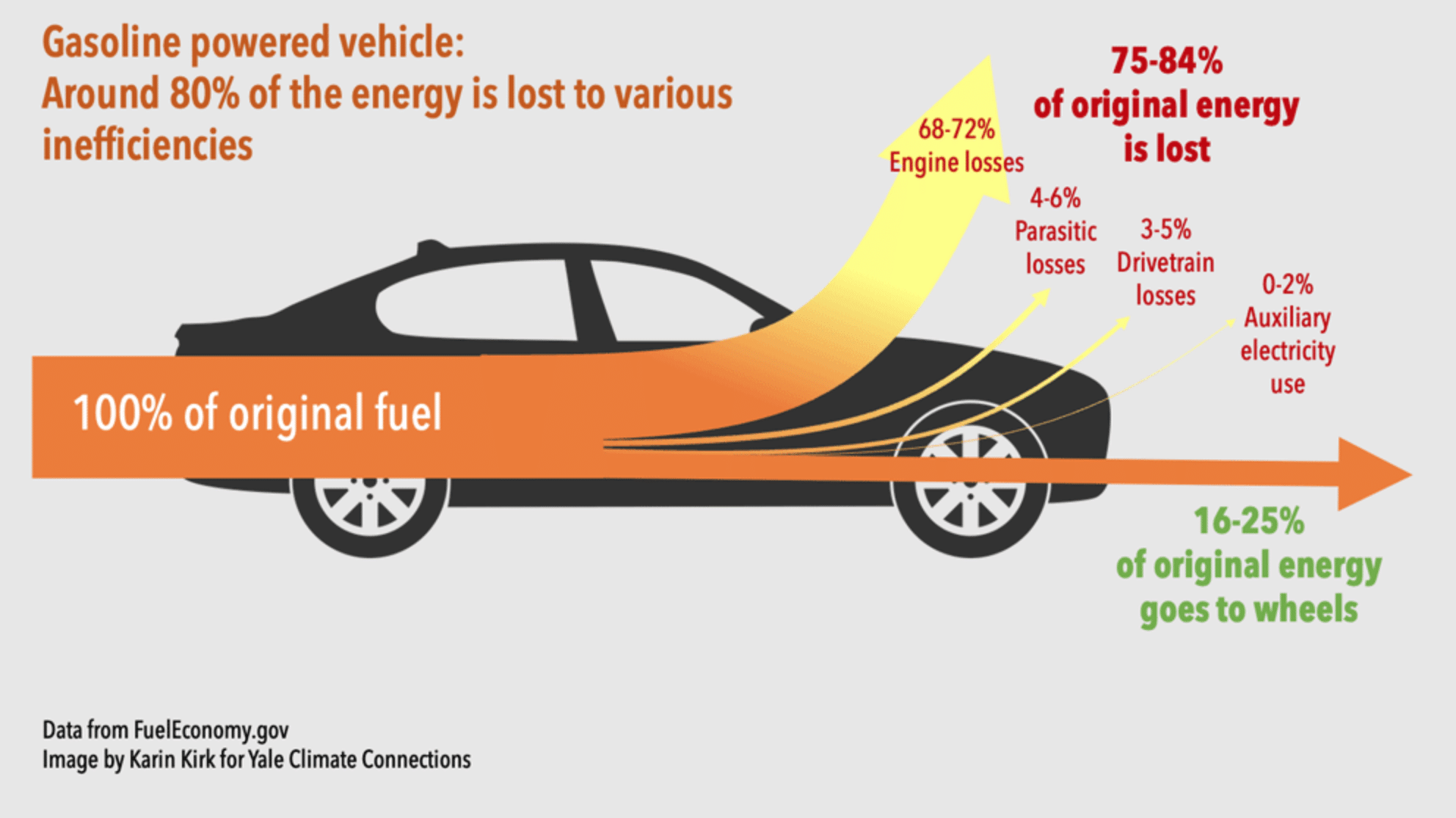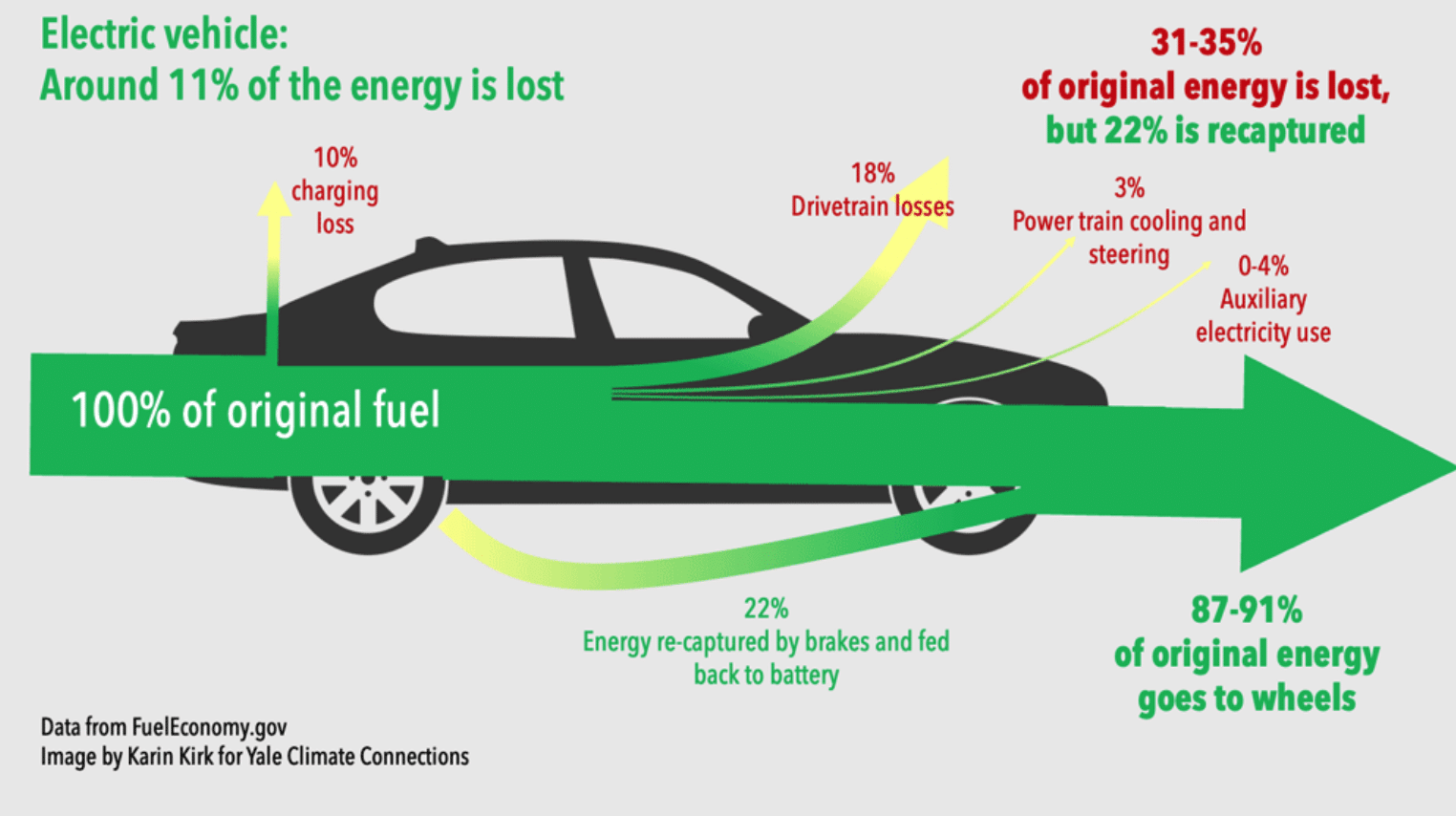Our readers often ask us, “Which is better for the environment – electric vehicles or gas-powered cars?” Well, when it comes to the environmental impact of driving an electric vehicle (EV) or internal combustion engine (ICE) gas powered vehicle, several factors require consideration. Let’s dig in!
Asking the Right Question
Now, wording is important when it comes to the topic of which is better for the environment, EVs or ICE cars. People opposed to EVs might say something like “well those cars are powered by coal so how green can they really be?” Others might say, “have you seen the lithium mines in Africa – those prove that EVs are not good for the planet.” While EVs impact the environment, so do ICE vehicles. The question isn’t about whether they have an impact. Instead, it is are EVs better for the environment than ICE vehicles. In short, the answer is “yes.” Are EVs perfect? No. But are they better? Yes. We get into some specifics below.
Impact of Emissions
Some environmental scientists argue that greenhouse gas (GHG) emissions are the most important thing that human beings need to address to avoid the worst effects of global climate change. Take the emissions of an EV vs an ICE car. Some may consider just what comes out of the “tailpipe” of each type of vehicle. This misses the larger picture as far as which is better for the environment. For both types of vehicles, the production of the vehicle’s components (dashboard, screens, frame, etc.) and the way each type of vehicle is fueled add to overall emissions.
Considering the Entire Lifespan
When the entire lifespan of a vehicle is considered, from production to junkyard, growing evidence indicates that EVs are better for the environment than ICE vehicles. Lithium mines certainly have environmental effects on the planet. But deep sea oil drilling is not exactly good for wildlife. It results in polluting. It also requires transport to a refinery to be made into gasoline or diesel (which produces additional emissions itself).
New studies show the ways that, when considering the entire lifespan of a vehicle, EVs emit about half as much carbon as an ICE vehicle does. This is even when considering the production of an EV’s large battery pack. An ICE vehicle does not have a large battery pack. At the point that the vehicle is produced, it has emitted less polluting gasses than an EV. However, ICE vehicles are extremely inefficient. The more an ICE vehicle is driven, the more it emits into the atmosphere, and the worse it is for the planet.
[cta_blog_section title=’Looking for an EV?’ cta_url=’https://www.evuniverse.com/best-selling-electric-cars’ cta_button=’LISTINGS’]
Efficiency of EVs and ICE Vehicles
There is evidence suggesting that ICE vehicles are about 20% efficient. This means that once fueled up, only 20% of the gas or diesel burned is used to move the car forward. If you fill your car and it costs $50, only $10 worth of gas moved the car forward. The rest burns off in several ways. The largest efficiency loss comes from idling in traffic or warming up a vehicle in the driveway before heading out for the day.

On the other hand, EVs deliver around 90% efficiency. This means that, of all the electricity that makes its way into the battery pack, 90% moves the car forward. Studies show that even the most inefficient EVs do better in almost every region of the United States than the most efficient ICE car. Find one such report here suggesting that EVs are better for the environment than gas powered cars.

We cover efficiency comparisons at length in this post: “Comparing Energy Efficiency Between EVs and Gas Powered Cars”
Renewable Energy Sources
And remember: all of this considers the current electrical grid present in the United States. As the grid gets more of its electricity from renewable energy sources, EVs continue to get cleaner, from an emissions standpoint. EVs also allow for the possibility of powering a vehicle with wind or solar, while ICE cars do not.
Instead, their fuel source gets pumped from the ground, put in a container of some sort, shipped to a refinery, made into gasoline or diesel, put back into a container, shipped to a gas station, and then finally pumped into your vehicle. All of these steps require electricity and emit GHGs. Don’t forget that the end result is still only 20% efficiency once used by the gas-powered car. Hopefully none of it spills or leaks at any point along the process harming the environment and life of every type. We must consider these factors in the discussion of which is better for the environment.
Understanding the Economics
What do the above efficiency numbers translate to in terms of dollars? A good example is the Tesla Model 3 (the second best-selling EV in 2021). Depending on the year and trim, a Model 3 offers between a 50 and 82 kilowatt-hour (kWh) battery pack. This is how much energy can be stored in the battery pack. For reference, the average American household uses about 10,632 kWh per year (or roughly 30kWh per day). Using the average of a Model 3 battery pack (66 kWh) and the average price of electricity in the United States (16 cents per kWh), we calculate the price to fully charge an EV from 0-100%. The total is $10.56, and of that $9.50 moves the car forward.
Small caveat here though. These prices assume that someone charges their EV from home 100% of the time, which can be rare. Charging on the road, or at a fast “level 3” charger comes at greater cost, averaging around 40 cents per kWh. That means that, on a longer trip at a fast charger, a Model 3 costs $26.40 to charge from 0-100%. Of that, $23.76 propels the car forward. This is just one example from one make and model of EV, and your results will vary.
What Goes Into Landfills
Another argument used against EVs goes something like this: “Once they reach the end of their life, those big battery packs just end up in the landfill. So how green can they really be?” Many batteries from other consumer electronics end up in the landfill. That may have more to do with the fact that it is easy to throw a cell phone in the garbage can. An electric vehicle battery pack clearly doesn’t fit as well.
Today, new systems offer the recycling of rechargeable batteries of all kinds. This ranges from the ones used in electric lawn mowers and rechargeable AA batteries (Google will even help you recycle devices for free). For EV batteries, their environmental impacts can be lessened in one of two ways. First, there are companies in the United States that are working on recycling these materials so they can reenter the supply chain, reducing the need for further mines around the world. Second, when some EV battery packs reach the end of their life, they offer potential use for energy storage projects. Take, for example, when solar energy is captured for use at night.
So Which is Better for the Environment?
In summary, EVs impact the environment, just like ICE vehicles. However, EVs not only are more efficient, but they allow for different types of recycling and reuse that lessen their environmental impacts. There is also no question that, from an emissions standpoint, EVs are better for the environment than ICE cars.
To see what percentage of your state’s electricity comes from coal or other sources, visit the Alternative Fuels Data Center here.
Image Credits: Karin Kirk

